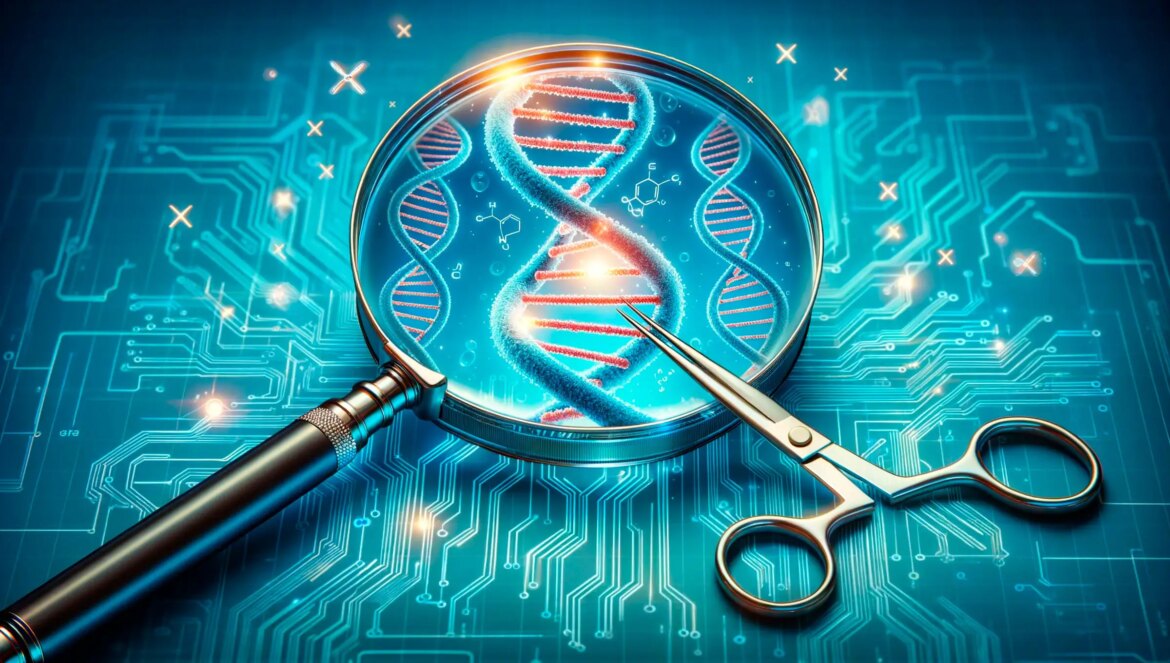Gene therapy, specifically utilizing the CRISPR-Cas9 method, presents a groundbreaking solution for addressing Severe Combined Immunodeficiencies (SCIDs) and various genetic disorders. Researchers from Bar-Ilan University have elevated this approach with their innovative GE x HDR 2.0 strategy, with a primary focus on achieving precise gene replacement.
Bar-Ilan University’s researchers are pioneering gene therapy for genetic ailments such as SCIDs through an enhanced version of the CRISPR-Cas9 technique, aptly named GE x HDR 2.0.
Severe Combined Immunodeficiencies (SCIDs) encompass a group of debilitating primary immunodeficiency disorders, primarily stemming from genetic mutations that disrupt T-cell development. SCID can also impact B-cell and natural killer cell functionality and counts. Without treatment, SCID leads to fatality within the first year of life.
The conventional treatment for SCID patients involves allogeneic hematopoietic stem cell transplantation (HSCT). However, the challenges of locating compatible donors and potential complications like graft-versus-host disease (GVHD) present significant obstacles to this approach.
The Potential of Genome Editing
A game-changing solution has emerged with the advent of genome editing (GE), particularly utilizing CRISPR-Cas9 technology. This state-of-the-art gene therapy research offers hope for numerous genetic disorders, including SCID. The CRISPR-Cas9 system creates targeted double-strand breaks in DNA, enabling precise gene modification. The repair process can either disrupt a specific gene or correct it, potentially targeting nearly any gene within the genome. This development opens the door to therapeutic interventions for a wide array of genomic diseases.
Prospects and Challenges of CRISPR-Cas9 HDR
One promising genome-editing approach, CRISPR-Cas9 Homology-directed repair (HDR)-mediated GE, offers the potential for precise gene insertion. In specific subtypes of SCID, an alternative to HSCT involves conventional CRISPR-Cas9 HDR-mediated gene insertion. However, it carries inherent risks, particularly in cases like RAG2-SCID. RAG2 is a nuclease involved in DNA cleavage during lymphocyte development, and CRISPR-Cas9 HDR-mediated gene insertion may lead to uncontrolled RAG2 nuclease activity and harmful structural alterations.
The GE x HDR 2.0: Find and Replace Strategy
In response, researchers from Bar-Ilan University in Israel propose an innovative replacement strategy, termed GE x HDR 2.0: Find and Replace. This approach, detailed in a paper published in Nature Communications on October 27, 2023, combines CRISPR-Cas9-mediated genome editing with recombinant adeno-associated serotype 6 (rAAV6) DNA donor vectors to precisely replace the RAG2 coding sequence while preserving crucial regulatory elements. This strategy can also be applied to other genes with hot spot regions for disease-causing mutations.
Dr. Ayal Hendel, from Bar-Ilan University’s Goodman Faculty of Life Sciences, underscores, “Our innovation hinges on a pivotal insight: to efficiently trigger CRISPR-Cas9 HDR-mediated GE for precise coding sequence replacement, it’s essential to separate the distal homology arm from the cleavage site and align it with the sequence immediately downstream of the segment requiring replacement.
“In this process, elongating the distal homology arm length in the donor is of paramount importance. By preserving endogenous regulatory elements and intronic sequences, our approach faithfully reproduces natural gene expression levels, thereby mitigating the associated risks of unregulated gene expression.
“This groundbreaking technique, which entails replacing entire coding sequences or exons while retaining critical regulatory elements, brings renewed hope to patients with RAG2-SCID and holds immense promise for the treatment of various other genetic disorders.”
Reference: 27 October 2023, Nature Communications. DOI: 10.1038/s41467-023-42036-5
Table of Contents
Frequently Asked Questions (FAQs) about CRISPR-Cas9 Gene Therapy
What is the significance of CRISPR-Cas9 in gene therapy?
CRISPR-Cas9 is a revolutionary gene-editing tool that enables precise modification of DNA, offering hope for treating genetic disorders like SCIDs.
How does CRISPR-Cas9 work in genome editing?
CRISPR-Cas9 creates targeted breaks in DNA, allowing for precise gene modification. It can either disrupt or correct specific genes, making it a versatile tool.
What are Severe Combined Immunodeficiencies (SCIDs)?
SCIDs are severe immune disorders primarily caused by genetic mutations that impair T-cell development. SCID can be life-threatening if left untreated.
Why is conventional treatment for SCID challenging?
The conventional treatment for SCID involves stem cell transplantation, but finding compatible donors and potential complications like GVHD pose significant challenges.
What is the GE x HDR 2.0 strategy, and how does it improve gene therapy?
GE x HDR 2.0 is an innovative approach that combines CRISPR-Cas9 with DNA donor vectors to achieve precise gene replacement. It addresses potential risks associated with gene insertion.
Who are the researchers behind the GE x HDR 2.0 strategy?
Researchers from Bar-Ilan University in Israel developed the GE x HDR 2.0 strategy to advance gene therapy for genetic disorders.
How does GE x HDR 2.0 aim to reduce risks in gene therapy?
GE x HDR 2.0 focuses on separating the homology arm from the cleavage site and aligning it with the sequence downstream, preserving regulatory elements and reducing the risk of unregulated gene expression.
What are the implications of this research for patients with RAG2-SCID?
This groundbreaking technique offers renewed hope for patients with RAG2-SCID by providing a more precise and safer approach to gene therapy.
Can the GE x HDR 2.0 strategy be applied to other genetic disorders?
Yes, this strategy can be applied to other genes with hot spot regions for disease-causing mutations, potentially benefiting patients with various genetic disorders.
More about CRISPR-Cas9 Gene Therapy
- Bar-Ilan University Research
- CRISPR-Cas9 Overview
- Severe Combined Immunodeficiencies (SCIDs)
- Stem Cell Transplantation for SCID
- CRISPR-Cas9 Homology-directed repair (HDR)
- Nature Communications
- DOI: 10.1038/s41467-023-42036-5



3 comments
GE x HDR 2.0 strategy = game-changer. safer gene therapy = yay!
omg, CRISPR is amazin’! fixin’ genes like a pro. scids r scary. bar-ilan univ rocks!
GE x HDR 2.0? mind blown! scientists r genius. rly hope 4 cures soon.